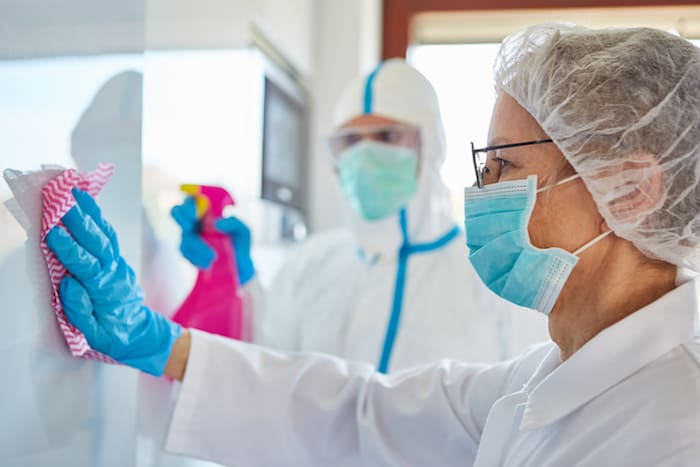Hospital room cleanliness plays an important part in the safety of patients, guests, and hospital faculty. Healthcare experts recognize that a hospital environment plays a significant role in infection control and disease prevention.
Hospital sanitation, however, is considerably more complex than other sanitization methods. Certain cleaning materials, disinfectants, and techniques should be used in the process. Aside from that, basic health protocols should be always followed.
Aside from cleanliness, other aspects likewise affect patient safety and satisfaction, such as lighting, room temperature, and air quality. If you want to know more about room improvement, this link explains how you can achieve such.
Proper sanitation and room improvements can help patients recover faster in the hospital. To know more about hospital hygiene and how to improve cleanliness, just continue reading the tips listed below:
Perform Initial Room Assessment
Before cleaning a hospital room, you must perform a visual assessment of the site to find out if:
- The patient’s condition can be an obstacle to room sanitation.
- Suppose the cleaning personnel will require extra PPE (Personal Protective Equipment) or supplies.
- There are challenges like machines or any clutter that could pose a problem to safe room sanitation.
- The room has damaged portions or amenities that require you to inform management.
Move From Cleaner To Filthier Areas
When cleaning rooms, move from cleaner portions then proceed towards filthier areas. Doing this will help prevent disseminating germs and dirt. For example, one can begin cleaning the patient area before moving to the patient bathroom. In addition, remember to clean rooms of patients that are not under transmission-based prevention before focusing on rooms covered by those specific measures.

Follow A Methodical System
When cleaning patient rooms, you must follow a systematic method to refrain from skipping areas. For instance, clean clockwise or move from left to right to ensure that every corner is covered. In the ward section where there are multiple beds, you can sanitize by beginning at the end of the bed and then cleaning clockwise.
Promptly Disinfect Body Fluid Spills
And finally, you can enhance the cleanliness of hospital rooms by promptly disinfecting body fluid spills. Body fluids pertain to blood, vomit, saliva, urine, etc. To clean these efficiently, follow the steps below:
- First, put on the proper PPE.
- Contain the liquid by cleaning the spill with an absorbent cloth or material. If you have absorbent granules, you can also utilize that to harden the body fluid.
- Next, dispose of the spill following infectious waste techniques.
- Sanitize the area entirely by cleaning with warm water and neutral soap.
- After washing the area, disinfect by utilizing a hospital-approved intermediate-grade disinfectant.
- Once finished, deliver every reusable piece of equipment like mops and cleaning towels for washing and disinfecting.
Change Sheets And Blankets Regularly
Healthcare administrators should identify those things that cause contamination in their facilities. One of the causes of viral and bacterial infections are contaminated bedsheets and blankets. Therefore, these must be washed and disinfected regularly. Using clean towels and linens on all beds and in all rooms will help prevent the spread of germs and infection.
Hire Commercial Cleaners
There are cases wherein cleaning should be delegated to the experts. Hiring the right commercial cleaning services will enable effective implementation of cleaning strategies. Professional cleaners possess the right knowledge and equipment to ensure the cleanliness of rooms in clinics, hospitals, nursing homes, and more.
When hiring commercial cleaners, look for those who specialize in cleaning and disinfecting clinics and similar facilities, like https://peachieclean.com.au/. Professional cleaners use appropriate disinfectant techniques and equipment while ensuring that no one is unnecessarily exposed to potential sources of infection.

Ensure Hygienic Practices In Healthcare Settings
To improve the cleanliness in the healthcare facility, it’s important to keep the entire staff educated on best hygiene practices. They should be aware of the risks associated with poor hygiene in the healthcare premises. Healthcare providers should provide up-to-date training and information regarding disease prevention in the workplace to ensure the safety of patients. Effective management and attention to detail is required to ensure that correct standards and cleaning techniques are being applied consistently.
Preventing the transmission of diseases and infections is also possible with appropriate patient education. Patients and visitors should adhere to the rules and regulations of the healthcare facility to ensure proper cleanliness and sanitation, such as regular handwashing or proper disposal of rubbish. With the right information and reminders, patients and visitors can help maintain cleanliness in the premises of the clinic or hospital.
Final Thoughts
Maintaining cleanliness in hospitals doesn’t just ensure the safety of the patient, but it aids in preventing the spread of infections too. The healthcare industry understands that hospital hygiene adds service value and increases patient satisfaction. Cleanliness and disinfection are not just routine activities that requires a budget, but it is also essential for hospitals to function safely and efficiently.
The Editorial Team at Healthcare Business Today is made up of skilled healthcare writers and experts, led by our managing editor, Daniel Casciato, who has over 25 years of experience in healthcare writing. Since 1998, we have produced compelling and informative content for numerous publications, establishing ourselves as a trusted resource for health and wellness information. We offer readers access to fresh health, medicine, science, and technology developments and the latest in patient news, emphasizing how these developments affect our lives.








